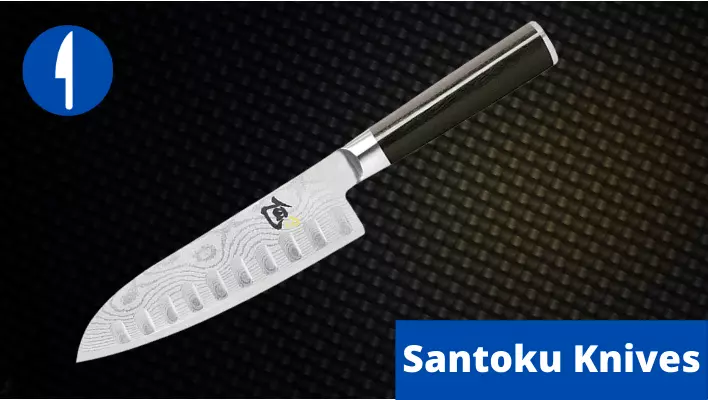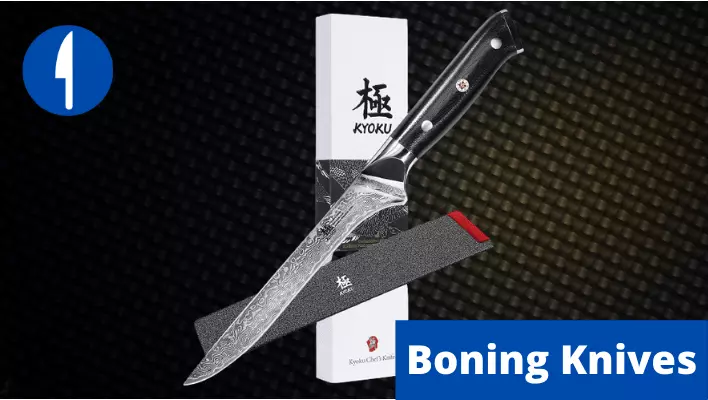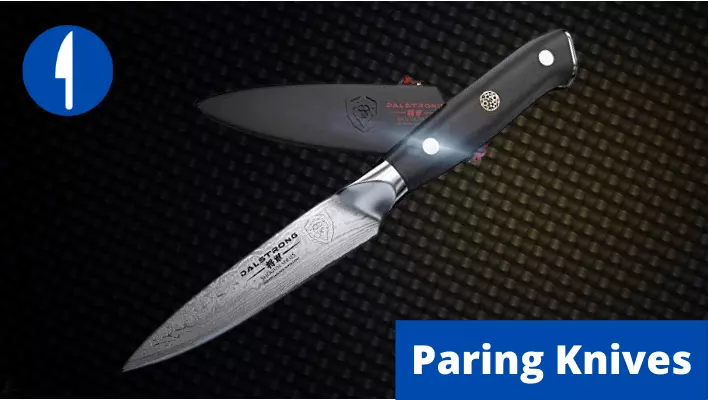Cooking is fun for a chef if he has the right tools at the countertop. The main course of any cooking is cutting down the ingredients and this sometimes becomes the challenging part if you don’t have the right knife.
You may find doing your job pretty hard with that specific knife due to so many reasons. However, it is also possible you don’t know how to use this knife. Sometimes, it becomes hard to decide which types of kitchen knives you should purchase and which knife you should avoid.
As kitchen knives are widely used around the world; you may easily find out the knives. All of them will be claiming themselves as a Kitchen knife and this is the exact catch that you need to avoid. Otherwise, this is going to be a bad deal.
Without the right knowledge and right knife, you won’t be able to play with your knives out there on the cutting boards. So, getting knowledge about the types of kitchen knives is a must thing to do before or at least after purchasing a knife.
You may have purchased a knife set or a single knife and it is not doing the work that you want it to be. This could be a point where you should learn how and which things you should cut with that blade. There’s a little difference between these and the other Japanese Knife types.
Nowadays, German & Japanese knives have dominated both American and European kitchens. Both these sorts of knives are trustworthy at their points. So, there will be multiple names for all types of kitchen knives, but they may be intended to do almost the same task with a bit of exception.
Don’t worry, We won’t dive into the German VS Japanese debate in this guide. Instead, we will directly explore the kitchen knife types whether they fall under the German, Japanese, or Chinese categories without wasting your time.
10 Types of Kitchen Knives | Tools Of Chef
1. Chef Knives

So, you want a universal deal for your cutting task and you are not interested in purchasing every single sort of knife out there. A chef knife is the King of the kitchen knives that you will find in every single kitchen.
It is a multi-purpose knife that has a durable and long blade as compared to some other knives. This knife is the most versatile one due to its length that makes them very easy to maneuver out there on the cutting boards.
Now, this blade could be stamped or either forged depending on the knife brand. However, forged knives tend to be more practical than stamped ones as they are heat-treated and they feature a durable profile.
This is a good deal from beginners to professional and home chefs as well. Their balanced blade doesn’t tire you on longer sessions. If you are fond of rocking motion, a chef knife is the best tool to get the work done at an optimal speed.
You can use a chef knife whenever and wherever you want. This knife can handle peeling, slicing, mincing, dicing, and chopping of vegetables, fruits, cooked meat as well as bakery items like Cheese or butter.
Other than that, a chef knife is pretty sharp and the resharpening part is also easy for them. You can use them to sharpen by using Whetstones or Machine sharpeners as well. So, they can keep delivering sharp and precise cuts.
Check out our Exclusive guide to the Best Chef Knives
2. Santoku Knives

This is the second most popular and could be considered as a backup or maybe an alternative to a Chef knife especially if you like Japanese knives. Santoku is a Japanese word with the meaning of “three uses”. So, a Santoku knife is meant for three specific uses.
You can use a Santoku mainly for three sorts of cuttings that are known as mincing, dicing, and slicing. Some chefs believe in Chopping, Slicing, and Dicing. That being said, you can use a Santoku for all these types of cutting.
Unlike a chef knife’s length of 08 to 12-inches long blade, a Santoku knife only holds a blade with up to 08-inches of blade length. As compared to a chef knife, a santoku could be made up of High Carbon Steel for an affordable deal. You might also find Santoku in stainless steel blades like in Shun, or maybe in Tojiro’s case.
You can use a Santoku to conquer the precision cutting of various ingredients without losing their responsiveness. This knife holds a relatively slim blade at least on the edge which is intended for thin cuts.
Here, the rocking motion may not be successful pretty much due to its wide blade. But, you will find santoku knives with the chef’s knives designed to make them hybrid. Santoku knives could be both single or double beveled. But the single bevel knives could perform better in sharpness & double one in the resharpening.
Check out the Best Santoku Knife here
3. Boning Knives

This is another great type of kitchen knife that is meant for dealing with raw meat. It could have a longer blade, but the blade will be narrow, slim, and sharp in any case without any doubt. Generally, you will find up to 07-inches of long blades.
However, this is not the necessary case at all because this all depends on Knives brands. Most knives tend to be hard, tough, and straight to work well. But this is not a requirement for a boning knife at all.
Instead, these knives hold a flexible blade that makes them deal with the complex joints nicely within a large chunk of meat. Along with that, it is also meant for trimming the fat without any sort of problem.
They hold a contoured blade due to some reason. First, they are flexible; and flexible knives with straight profiles bend and break out easily. Secondly, this blade provides good maneuverability and a flawless cutting experience.
Not all boning knives come in a contoured blade. Some also come in curved, straight, and even in a bit of rounded profile. This all depends on the nature of your work as well as your requirements.
Thick and straight boning blades are meant for large animals to separate the meat from bones. Plus, they are also stiff instead of being flexible, so they penetrate deeper easily. These knives must be used sharp, or they will chip & ruin the meat.
Check out the Best Boning Knife here
4. Meat Cleavers

As the name suggests, meat cleavers are officially meant for dealing with the meat and they are mostly used by butchers and nonveg chefs. If you are a meat lover, then this knife type is a must-go for your kitchen fleet.
As compared to other knives, these knives are larger and heavier than anybody else. This thing holds a rectangular shape, and they hold a thick & wider profile out of the box. Now, don’t get confused with Cleavers and Vegetable knives. We will be discussing them next to this one.
A cleaver features a completely straight blade and this doesn’t let it work in rocking motion in any case. Due to its large profile and a big blade, this knife is only meant for cutting in up and down motion.
Usually, Carbon steel knives could rust easily upon contact with water. So, this thing is possible here as well. However, stainless steel cleavers don’t rust. But, a carbon blade could start rusting even with the blood if you don’t take care of it.
Japanese cleavers tend to perform intelligently as compared to Chinese and Western ones. They are razor-sharp and hold a durable blade. Their steel blade is made through forging and this adds decent longevity to keep them working.
Check: Kitchen Knives Buying Guide
5. Nakiri Knives

Nakiri is Japanese knives meant for vegetables and they have commonly used knives out there in Western Kitchens. A Nakiri is only meant for vegetables just like a cleaver is meant for meat. So, you don’t have to be confused by them.
Although both the Nakiri and Cleaver hold almost similar appearances, there are also a couple of differences. A cleaver comes with a thick, heavy, and wide blade profile, and its blade is completely straight without any sort of turns.
However, Nakiri knives are also rectangular but they are lighter than a cleaver. Their rectangular profile isn’t wide, just like a cleaver. You will find them almost half of the width of a cleaver.
Not just that, these knives are offered just under 10-inches long blades. A Nakiri holds a thin profile but it features an impressive sharpness to deal with all kinds of vegetables, fruits, and herbs.
These knives should never be used on bones or hard things. Otherwise, it will start chipping out. However, you can still cut raw meat with it, but your blade should be razor-sharp for a smooth cutting experience.
These knives could be either single or double bevels. In both cases, they will easily work on vegetables. Japanese Vegetable knives come with a Non-Stick blade with Tsuchime encryption on it. So, you will get impressive & flawless cutting.
Check out Our Guide to the Best Japanese Vegetable Knives
6. Utility Knives

Now, this knife falls under both the Kitchen and General knives categories. As the name suggests, a utility knife is meant for dealing with general cutting tasks instead of specific ones.
You can use these knives for cutting vegetables, fruits, meat, cheese, or other stuff as well. A Utility knife was made for serving waiters in large-scale restaurants to serve their customers.
A utility knife holds a standard profile but they are sharp undoubtedly. These knives come with a thinner blade and this blade presents a shape cutting edge. This way, you can also get some precision with these knives.
You can also use it with the little stuff instead of the full-range things. This is lighter than the chef knife and they feature almost half of the blade length of a chef knife. They are offered in less than 08-inches blades.
Check out the Best Utility Knife here
7. Bread Knives

Bread knives come with a longer and serrated blade that is also known as its teeth. You can cut anything with a chef knife, but cutting out bread could be a challenging task sometimes. As their plain blade doesn’t work efficiently.
You might cut down loaves of bread for small-scale work or preparing your breakfast. But, a chef knife will take a lot of your time when cutting out a bunch of bread regularly. Especially if you love preparing and eating Sandwiches.
Here, bread knives come into play to enhance your productivity. A bread knife doesn’t hold a straight cutting edge but a serrated edge with teeth on it. These teeth make a good grip on the crumbs and you don’t have to push it at all.
Right-handed bread knives hold serrations on the left side, and left-handed bread knives come with serrations on their right sides. This allows them to cut the bread, buns, and even sausages without applying pressure or turning the blade.
Along that, these knives are also pretty versatile and they apply the same formula for their versatility as a chef knife. The longer the serration will be on the blade, the more versatile a knife will be. They are often Ceramic knives in terms of build.
Check out the Best Bread Knife here
8. Paring Knives

These knives are one of the shortest knives in the kitchen but they hold a very spectacular versatility, to be honest. A paring knife is mainly meant for professional chefs, but household chefs can also get used to it quite easily.
These knives come with a sharp and tiny blade with a length of no more than 04-inches. You can use these knives for peeling vegetables and fruits of small size like apples, oranges, or whatever you like.
Paring knives are versatile enough so that you can get some precision with their blade during cutting. They could be made up of carbon or stainless steel. However, carbon ones are widely used as you need some stiffness to stand out better.
Check out the Best Paring Knife here
9. Carving / Steak Knives

Carving knives are not mainly meant for professional chefs but regular usage. These knives are not everyday knives but they are still very useful. You can use these knives to handle steaks and cooked meat & that’s mostly it.
These knives are also known as slicing or steak knives and they come in a longer blade. They come with a non-stick blade both in German or Japanese designs. So, it won’t catch the meat particle that you are going to cut.
They are also packed with decent versatility due to their length. These knives could come for up to 15-inches long blades. However, it is better to opt for up to 12-inches long blades, and this will be more than enough.
Check out the Best Slicing & Carving Knife here
10. Fillet Knives

Last but not the least, fillet knives are also one of the prominent types of kitchen knives. This knife should never be skipped as they are exclusively meant for preparing fish. These knives are mostly used for making fillets out of fish meat.
These knives feature a flexible blade and this helps in making the fillets easily. This knife is close relative to the boning knives. Nevertheless, they feature a thin, slim, and the sharpest blade out of the box.
Fillet knives come in a versatile and long blade with a length of almost 06 to 12-inches or maybe less. As fish contains loads of water components, these knives feature a stainless steel blade. So, you can get a flawless cutting experience.
Furthermore, you can use these knives to clean fish, duck, and chicken as well. They might also work with vegetables, but it will deliver a good precision at meat. This is also easy to sharpen but they easily start chipping on bones.
Check Out our detailed Guide to the Best Fillet Knives for fish
Summing Up the Types of Kitchen Knives
Without any doubt, a knife is considered a steering wheel for the kitchen. However, you need to choose the right knife to get the job done. Without the right knife type, your cutting will be full of blunt cuts that leave a bad impression that you never want at all.
Either you can perform all sorts of tasks with just a Chef Knife, or you can also purchase a knife set that is a complete package for a Commercial chef. Both of these things are best at their parts. Still, you need to choose the right one.
By getting to know about the types of kitchen knives, you will be preparing food with precision, easily and fastly at the same time. It is a great opportunity for an amateur chef to present his creativity and expertise to impress his consumers.
So, just grab the right cutting board and the right type of knife to start preparing the dinner with love. After skimming through this Kitchen knives types guide, you will be able to find the right knife confidently as per your needs.